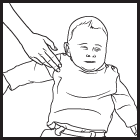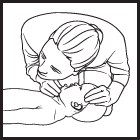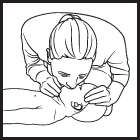Need a Baby Shower Gift

I am back with another post trying to point you in the direction of my AMAZON STOREFRONT.
How do you take care of a tropical foliage plant?
Use a damp cloth to wash the dust off of plant leaves periodically. Misting plants with a sprayer tends to keep the foliage cleaner and adds humidity. Most indoor plants love an occasional shower with lukewarm water. Again, this keeps the foliage clean and adds humidity
Amazon Affiliate Disclosure - As an Amazon Associate I earn from qualifying purchases. #CommisionsEarned
Chlorhexidine (klor HEX i deen)
Chlorhexidine gluconate can cause a rare but serious allergic reaction that may be life-threatening. Get emergency medical help if you have: hives, severe skin rash; wheezing, difficult breathing; cold sweats, feeling light-headed; swelling of your face, lips, tongue, or throat.
Chlorhexidine belongs to a group of medicines called antiseptic antibacterial agents. It is used to clean the skin after an injury, before surgery, or before an injection. Chlorhexidine is also used to clean the hands before a procedure. It works by killing or preventing the growth of bacteria on the skin.
You can bathe with it.
Apply the soap to your entire body from the jaw down, using a clean washcloth or your hands. Do not use CHG near your eyes, ears, nose, or mouth. Wash thoroughly for five minutes, paying special attention to the area where your surgery will be performed. Do not scrub your skin too hard.
Although chlorhexidine is useful in disinfecting intact skin and cleaning dirty traumatized wounds, these agents should not be used on clean healing wounds.
.
.
.
.
.
It works by decreasing the number of bacteria in the mouth, helping to reduce swelling and redness of the gums and bleeding when you brush.
Common side effects may include:
FOR PETS ORAL CARE
Chlorhexidine gluconate is a germicidal mouthwash that reduces bacteria in the mouth. Chlorhexidine gluconate oral rinse is used to treat gingivitis (swelling, redness, bleeding gums). Chlorhexidine gluconate is usually prescribed by a dentist.
Chlorhexidine oral rinse should be used after you have brushed and flossed your teeth. Rinse the toothpaste completely from your mouth with water before using the oral rinse. Do not eat or drink for several hours after using the oral rinse.
It may take up to 6 weeks to see the full benefits of using this solution. Tell your doctor if your condition persists or worsens.
In a previous study, it was noted that 0.12% chlorhexidine digluconate was superior to Listerine in its ability to maintain optimal gingival health during the entire three weeks of mouth rinse use. Aug 28, 2013
https://www.ncbi.nlm.nih.gov/pmc/articles/PMC3780369/
Is chlorhexidine better than Listerine?
This study has demonstrated that chlorhexidine was superior to Listerine and Meridol in its ability to maintain low plaque scores and gingival health during these 3 weeks of no mechanical oral hygiene.
The data from this study is completely consistent with the finding of several studies and confirm that both Chlorhexidine and Listerine are highly efficacious in reducing plaque and gingivitis, though Chlorhexidine is proven to be significantly better than Listerine.
-M Brecx, E Brownstone, Donald Mac, S Gelskey, M Cheang. Efficacy of Listerine, Meridol, and Chlorhexidine mouth rinses as supplements to regular tooth cleaning measures. J Clin Periodontol. 1992;19(3):202–207. [PubMed] [Google Scholar]
 | 1. Shout and Tap Shout and gently tap the child on the shoulder. If there is no response and not breathing or not breathing normally, position the infant on his or her back and begin CPR. |
 | 2. Give 30 Compressions Give 30 gentle chest compressions at the rate of 100-120/minute. Use two or three fingers in the center of the chest just below the nipples. Press down approximately one-third the depth of the chest (about 1 and a half inches). |
 | 3. Open The Airway Open the airway using a head tilt lifting of the chin. Do not tilt the head too far back |
 | 4. Give 2 Gentle Breaths If the baby is not breathing or not breathing normally, cover the baby's mouth and nose with your mouth and give 2 gentle breaths. Each breath should be 1 second long. You should see the baby's chest rise with each breath. |
CONTINUE WITH 30 PUMPS AND 2 BREATHS UNTIL HELP ARRIVES | |
